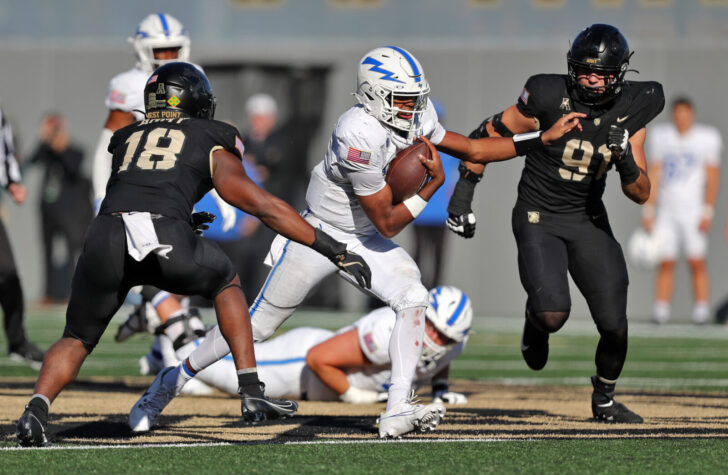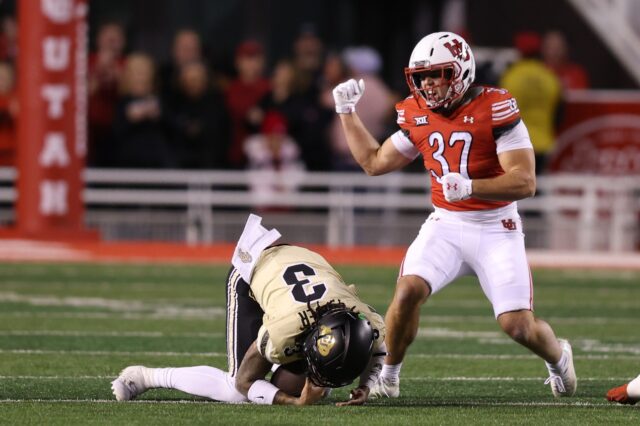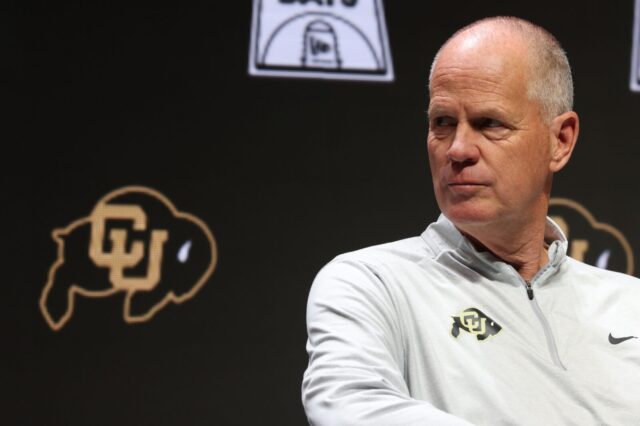Strike 3: While the winds of change swirl around the college football world, it’s business as usual at the Air Force Academy.
The Falcons aren’t changing conferences or coaches. They aren’t trying to outbid rival schools for recruits or transfers with big bags of NIL cash. All they’re trying to do is to beat the team on the other side of the line of scrimmage. Same as it ever was.
Air Force, Army and Navy are in the same boat, as it were. While the Falcons had a down year in 2024, both Army and Navy spent time in the national rankings last season. And while politicians and courts grapple with how college football programs should share revenue with players past, present and future, student-athletes at the service academies continue to compete the old fashioned way. And to the surprise of many, the old way still works.
Something else to add in: While the Transfer Portal is a vehicle for quick change for several programs, the academies can’t add players via the portal, they can lose them. So there’s that to deal with, too.
So while big time college football moves closer and closer to making football players employees of the institution, service academy athletes are already employees of the federal government. They cannot receive any Name, Image and Likeness payments. Their status as “active-duty” service members makes it illegal for them to use their status for “private gain.”
Sounds like the deck is stacked against them. But they’re used to it. Underdogs for life.
Here’s the truth. Student-athletes at the service academies do fine financially while they’re in school. We hear about the NIL deals for players like Travis Hunter and Shedeur Sanders, but most college football players, even with revenue sharing kicking in this year – won’t make much more than $50,000. Meanwhile, the academies pay nice stipends of as much as $60,000 per year. And after you graduate from a service academy, you’re pretty much set for life with a six-figure starting salary, even if you don’t get a shot at the NFL. The average career earnings for a graduate of West Point is between $5-$10 million.
So there’s the incentive to forge the instant gratification of NIL.
Meanwhile, how will not having access to NIL cash or transfer players work for the Falcons this season?
Coming off a very unusual and un-Air Force like 5-7 season a year ago (with four wins in a row to close out the season) the Falcons are due for a rebound. After winning their season opener in 2024, AFA lost seven straight before turning things around.
As is typically the culprit when the Falcons do have that rare down season, youth and inexperience doomed them last year. Head coach Troy Calhoun has told the media that they should expect more of the same in terms of growing pains in 2025.
“Each year is certainly unique,” Calhoun said at Mountain West Media days. “Especially with the amount of roster turnover we have. We will play very very hard. My gut tells me we will play good football late in the season, but it may take us six or eight games to get to that point.”
Those statements should actually serve as a warning to this year’s AFA opponents. Oftentimes, the Falcons have had their best seasons when very little was not only given to them, but expected of them as well.





